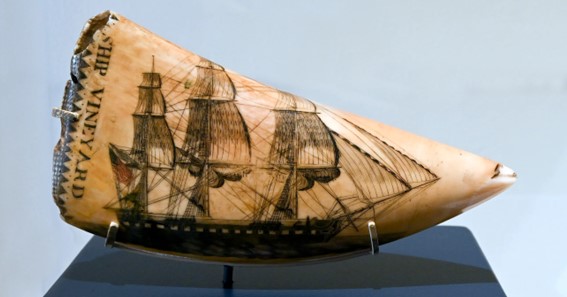Are you curious to know what is scrimshaw? You have come to the right place as I am going to tell you everything about scrimshaw in a very simple explanation. Without further discussion let’s begin to know what is scrimshaw?
What Is Scrimshaw?
Scrimshaw is an ancient and intricate art form that originated among sailors in the 18th and 19th centuries. It involves the engraving or carving of intricate designs and narratives on materials such as ivory, bone, or shell. Scrimshaw’s unique history, meticulous craftsmanship, and captivating storytelling make it a fascinating and cherished art form. In this blog post, we will delve into the world of scrimshaw, exploring its origins, techniques, and enduring legacy.
Origins And Significance
Scrimshaw has its roots in the maritime culture of sailors, particularly those on whaling ships during the 18th and 19th centuries. Sailors, seeking a way to pass the time during long voyages, began carving intricate designs into whale teeth, bones, and baleen (the flexible filter plates found in a whale’s mouth). Scrimshaw became a form of self-expression, allowing sailors to create art that reflected their experiences, emotions, and the beauty they encountered at sea.
Techniques And Materials
The art of scrimshaw requires great skill, precision, and patience. Here are some key aspects of scrimshaw craftsmanship:
- Engraving and Carving: Scrimshaw artists use sharp tools, such as knives or needles, to engrave or carve intricate designs into the chosen material. The designs often depict maritime scenes, whales, ships, nautical symbols, and even portraits or personal messages.
- Ink or Pigment Application: Once the design is engraved or carved, ink or pigment is applied to enhance the contrast and bring the artwork to life. Artists carefully rub the ink or pigment into the carved lines, wiping away the excess to highlight the intricate details.
- Materials: Traditional scrimshaw utilizes materials such as ivory, bone, or shell. However, due to concerns over the conservation and ethical sourcing of these materials, contemporary scrimshaw artists often work with alternative materials like synthetic ivory or acrylic.
Enduring Legacy And Appreciation
Scrimshaw holds a significant place in art history and maritime culture. Here’s why it continues to captivate and inspire:
- Historical and Cultural Preservation: Scrimshaw provides valuable insights into the lives of sailors and their experiences at sea during a specific era. These intricately carved pieces serve as historical artifacts, capturing stories, imagery, and emotions from a bygone time.
- Artistic Mastery: Scrimshaw showcases the skill, precision, and creativity of its craftsmen. The intricate details, delicate shading, and storytelling abilities of scrimshaw artists demonstrate the level of craftsmanship and artistic expression within this unique art form.
- Collectibility and Appreciation: Scrimshaw pieces are highly sought after by collectors and art enthusiasts. The scarcity of genuine antique scrimshaw, along with its historical significance and artistic value, contributes to its desirability and collectible status.
Preserving The Legacy
As with any art form, it is important to respect and preserve the legacy of scrimshaw. This includes adhering to ethical guidelines regarding the materials used, supporting contemporary scrimshaw artists, and promoting awareness of its historical context and cultural significance. By appreciating and valuing scrimshaw, we contribute to the preservation of this remarkable art form for future generations to enjoy.
Conclusion
Scrimshaw stands as a testament to the creativity, craftsmanship, and storytelling abilities of sailors who embarked on long and challenging journeys at sea. Its intricate designs carved onto ivory, bone, or shell capture the beauty and mystery of maritime life. As we continue to admire and appreciate scrimshaw, we honor its historical significance and the artistic legacy it represents. So, take a moment to marvel at the delicate lines, the evocative imagery, and the stories etched into these treasured pieces of art—scrimshaw truly brings the tales of the sea to life.
If you love learning new things then you then you can read interesting topics here at squareroott.
FAQ
Is Scrimshaw Legal In The Us?
Legality of Scrimshaw
Scrimshaw that was created on elephant ivory before 1989, and sperm whale and walrus ivory before 1973, is still legal. The Marine Mammal Protection Act prohibits scrimshaw created after that year from being commercially imported into the United States.
Why Is It Called Scrimshaw?
Scrimshaw is a form of folk art practiced by whalemen in the 19th and early 20th centuries (West). The name comes from the British slang “scrimshanker,” meaning one who wastes time (Dorsey). Whaling voyages often lasted four years or more and the work of whaling was dangerous.
Is Scrimshaw Worth Anything?
Prices range from less than $1,000 to $75,000 or more, with ongoing scholarship increasing the interest of collectors and the values of scrimshaw. Made as gifts, scrimshaw teeth depict the images that were most important to a sailor: whaling scenes, ships, women, patriotic motifs, idyllic homesteads.
How Can You Tell If Scrimshaw Is Real?
To accomplish this test, heat a pin until it’s almost red hot and then touch it to an inconspicuous part of the item. If it scorches and smells like burning bone, you’ve got a real piece on your hands. The pin test will cause polymer or plastic to melt into the piece and emit the smell of burning plastic.
I Have Covered All The Following Queries And Topics In The Above Article
What Is A Scrimshaw
What Is Scrimshaw?
What Is Scrimshaw Made Of
What Is Scrimshaw Art
What Is Scrimshaw Ivory
What Is Scrimshaw Worth
What Is Scrimshaw
Is scrimshaw still made
